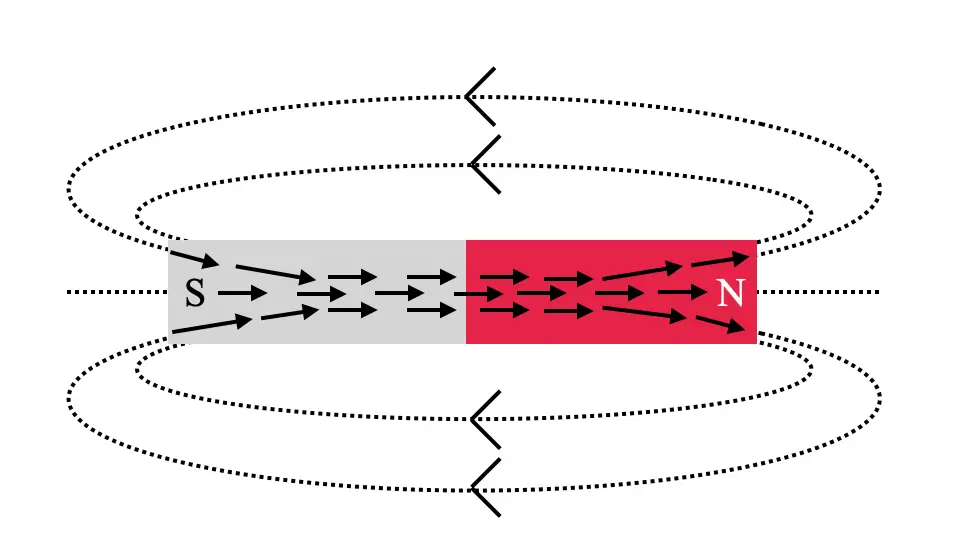Magnetism is a fundamental force in the universe, shaping the behaviour of objects on both macroscopic and microscopic scales. One of the most illuminating concepts in the study of magnetism is that of magnetic lines of force. These imaginary lines serve as a visual aid to understand the behaviour of magnetic fields and the interactions between magnets and other magnetic materials. In this article, we delve into the characteristics and phenomena associated with magnetic lines of force.
Understanding Magnetic Lines of Force:
Magnetic lines of force, also known as magnetic field lines, are an abstract representation of the invisible force field surrounding a magnet or a current-carrying conductor. They provide a convenient way to visualise the direction and strength of magnetic fields. The concept was introduced by Michael Faraday in the 19th century to describe the behaviour of magnets and electric currents.

Characteristics of Magnetic Lines of Force:
- Directionality: Magnetic field lines always form closed loops that emerge from the north pole of a magnet and terminate at the south pole. This directionality is consistent with the convention that magnetic field lines flow from north to south, outside the magnet, and from south to north inside the magnet.
- Density: The density of magnetic field lines represents the strength of the magnetic field. Where the lines are closer together, the field is stronger, and where they are farther apart, the field is weaker. This property helps visualise the intensity of magnetic fields in different regions.
- Uniformity: In a uniform magnetic field, the spacing between magnetic field lines remains constant, indicating a consistent field strength throughout the region. However, in non-uniform fields, such as those near the poles of a magnet, the lines may converge or diverge, reflecting changes in field strength.
- Curvature: Magnetic field lines tend to curve in the presence of magnetic materials or other magnets. This curvature indicates the tendency of magnetic fields to align with the orientation of magnetic objects. For instance, iron filings sprinkled around a magnet will align along the magnetic field lines, revealing their curved path.
- Indication of Force: The tangent to a magnetic field line at any point represents the direction of the magnetic force experienced by a hypothetical North Pole placed at that point. This property allows us to predict the direction in which a magnetic object or a charged particle will move when placed in a magnetic field.
Characteristics of Magnetic Lines of Force:
- Magnetic Attraction and Repulsion: Magnetic field lines play a crucial role in understanding the behaviour of magnets. Like poles repel each other, causing the magnetic field lines to exert a pushing force, while opposite poles attract, leading to the convergence of magnetic field lines between them.
- Electromagnetic Induction: Magnetic lines of force are instrumental in explaining electromagnetic induction, a phenomenon discovered by Faraday. When a conductor cuts across magnetic field lines, an electromotive force (EMF) is induced in the conductor, leading to the generation of electric currents. This principle forms the basis of electric generators and transformers.
- Magnetic Shielding: Magnetic field lines can be manipulated to shield sensitive equipment from external magnetic interference. Materials such as mu-metal are used to divert magnetic field lines away from the protected area, minimising the impact of external magnetic fields.
- Magnetic Resonance Imaging (MRI): In medical imaging, magnetic lines of force are utilized in MRI machines to generate detailed images of internal body structures. By aligning the magnetic moments of hydrogen atoms in the body with a strong external magnetic field and then perturbing them with radio frequency pulses, MRI machines can create high-resolution images based on the response of these atoms.
- Geomagnetism: Earth itself behaves like a giant magnet, with magnetic field lines extending from its geomagnetic north pole to its geomagnetic south pole. These field lines play a crucial role in navigation, as they provide a reference for compass needles and help in determining direction.
In conclusion, magnetic lines of force are a conceptual tool that allows us to visualise and understand the intricate behaviour of magnetic fields. From the alignment of iron filings around a magnet to the functioning of complex medical imaging techniques, the concept of magnetic field lines permeates various aspects of science and technology, providing invaluable insights into the nature of magnetism and its applications.




